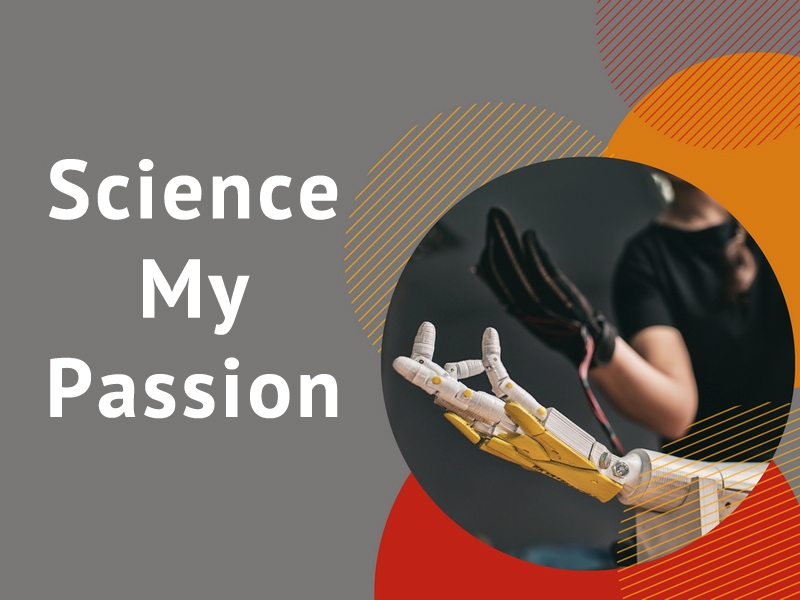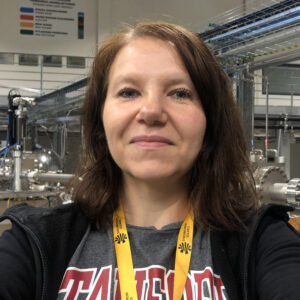PHYSICAL Culture!
In the general opinion, researchers of exact sciences (uniform accelerated motion?) Avoid sport by a wide berth. If, however, physics (!) And sport were combined, what would arise then?
We invite you to a surprising reading.
SCIENCE | MY PASSION
According to the definition taken from the Polish Language Dictionary, science is complete human knowledge arranged into a system of problems, but also a set of ideas that constitute a systematic whole and comprise a specific research field.
Science is also activity: learning and teaching.
Please read the “Science | My Passion” series, where our researchers present their work and show that science and research process can really draw us in.
PHYSICAL Culture!
According to the Great Dictionary of the Polish Language, “PASSION” is a fondness or a deep commitment and interest in something that we love and want to spend time on. Therefore, can a physicist say that the scientific discipline they represent is an indicator of their deep interest? Of course, they should say so because without interest and commitment it is difficult to do effective work that would bring satisfaction and tangible results. By that logic, I will try to answer the simple question: Where does my interest in physics even come from?
Even as a child, I was interested in technical innovations, and it was not a problem for me to write school essays about them. This is probably the reason why all the James Bond movies with the indispensable Q (which stands for Quartermaster) and the high-tech “toys” used by Agent 007 always aroused my curiosity. In secondary school, I was lucky to find a good passionate teacher, so my physics classes were very interesting. The division of the class into laboratory groups meant that we had the time to carry out simple experiments alone or in pairs, under the supervision of Ms Ewa, who taught us how to analyse measurement errors in practice. Knowledge gained in secondary school helped me in the first year of my university studies, especially during the physics lab classes. The first reports on individual experiments were not a big challenge for me. However, anyone who has studied physics will say that these are not easy and simple studies. That is of course true, but they are also not the type of studies where you have to memorise many pages of texts. It is enough to understand the discussed issues. This way of working strengthened my conviction that my choice of studies was good, although originally I had no intention of becoming a physicist. For me, attending a university also means living in a dormitory and functioning in a group, often an international one. It also means long hours spent studying together for colloquia and exams, which was another lesson in teamwork after secondary school. For a future scientist, this experience was invaluable.
My adventure with the laboratory life of an experimental physicist began, in fact, with the postgraduate laboratory, where I conducted my first independent serious experiments for my Master’s thesis in the Solid-State Physics Department, the head of which, at that time, was Professor August Chełkowski. It was an extraordinarily interesting time, that I could consider scientific fun. The topic of my thesis was intermetallic Laves phases, compounds based on rare earth elements, which can be used as magnetocalorics or hydrogen storage materials. After my Master’s degree studies, I continued my scientific adventure during doctoral studies under the direction of Professor Grażyna Chełkowska, where I further explored the secrets of the physical properties of intermetallic compounds, although they have a slightly different, more complicated crystal structures than the regular Laves phases. Since I considered the postgraduate lab as scientific fun, my doctoral thesis only intensified those feelings, and the amount of time I spent in the lab was countless. In addition to selected lanthanides compounds, a key element of my doctoral thesis was selected actinide compounds, and I carried out this stage in cooperation with two Polish scientific units Trzebiatowski Institute of Low Temperature and Structure Research in Wroclaw and the Polish Academy of Sciences in Poznan. Its central theme was electronic structure analysis. Already after my first year, I had the opportunity to work for several months in the international team of Professor Manfred Neuman at the University of Osnabrück as a part of the Erasmus programme. This experience also allowed me to get to know the X-ray photoemission spectroscopy in practical, technical, and substantial aspects. The group of Professor Neuman was at the time one of the European leaders of that technique. There, I was also able to do some experiments for my doctoral thesis.
After my doctoral studies, I worked as a physicist for several years and later as an assistant professor. The transition from the position of a technician to an educational and research-oriented one was also followed by the transformation of my research interests, which can be briefly summarised as a path from solid-state physics to nanophysics and nanotechnology. A part of this path was realised during my stay in research centres in Germany (FC Jülich) and France (University of Le Mans) as well as during trips abroad where I attended scientific conferences. At that time, I was involved in organising nano-physics studies as well as organisational assistance and supervision of Polish and French students. To put my skills to good use, I also finished a French course and passed the proficiency exam at the intermediate level. Under my supervision, a few students completed their Master’s theses in nanophysics with double diplomas, and the results of international collaboration have been published in many cases. This collaboration continues, as does my adventure in the nano-sized science world. Currently, I am working on different types of nanometric systems, including nanoparticles produced with different methods, including the so-called HEBM (High Energy Ball Milling), nanocomposites based on nanotubes or graphene oxide etc., which may potentially be applied in many areas, such as usage as materials in magnetic hyperthermia. The experience I gained from working in international groups during my studies helps me now since I work with many scientific centres from all over the world. Recently, I am also conducting some research using the synchrotron SOLARIS, primarily the PHELIX research beamline, where I analyse the electronic structure of nanocomposite materials and look for connections or synergies between individual composite elements.
I am a solid-state physicist currently focused on nanophysics and nanotechnology. Science is definitely my passion, but it is a very time-consuming passion. However, in order to find the balance, you need to have non-scientific passions as well. So, if a passion means being interested in something that we really like to do and what we want to spend time on, then science is not my only passion. It is also sports, but from a slightly different perspective than the standard one. Watching coverage of the Olympic Games as a kid, I have always been wondering what the organisation of such a great event looks like from the inside. And because dreams come true, many years later, I was able to use my passion for sports and test myself as an editor – sport journalists of one of the best volleyball websites. Then the finals of EuroBasket 2009 took place in the Spodek Arena. It was my first job in the organisation of such an event as the leader of the group of volunteers in the media area. This role was given to me by one of the best sports journalists in Poland. It was a real test and a challenge, but the experience I have acquired during training and the finals themselves was useful in the next years.
It is obvious that a scientific mind works perfectly well in challenging situations, which require immediate and very often unconventional solutions. Such situations are normal in many press offices of huge sports events that I have worked in. Imagine having the possibility to see how a TV studio works, how it prepares for the transmission of a sports event from scratch, how it works from the backstage of such events where you can collaborate with the best sports journalists from all over the world as well as with the best athletes. Sometimes, you need to take care of them during a press conference, interview them in the mixed zone or make it easier for them to contact the journalists who do not have access to some zones, and you do. If you add a dynamic team of wonderful people to the equation, then working in such a place is not only a real challenge but more importantly, a real pleasure and a wonderful break from laboratories, publications and every aspect of a scientist’s life. It is also a way of “recharging my batteries” for the next university challenges.
The biggest sports dream fulfilled so far? The first place is definitely taken by the Volleyball World Championships 2014: from the three weeks I have spent with the national teams of Brazil and Germany until the finals. Seeing live how the Polish national team wins the World Championship after many years was priceless.
One thing is certain, sports are pure physics. Therefore, watching it live from a slightly different perspective than an ordinary viewer, whether it is a volleyball match or athletic competition, I always wonder to what extent the physical parameters of athletes and external conditions at a given moment (ambient temperature, air humidity, wind force, etc.) and the so-called disposition of the day will allow using the laws of physics to achieve the best possible sports results. Although the laws of physics are unchangeable, the beauty and unpredictability of sport only add to their charm, and as a scientist, I can appreciate this.
Thank you for reading this entire post







